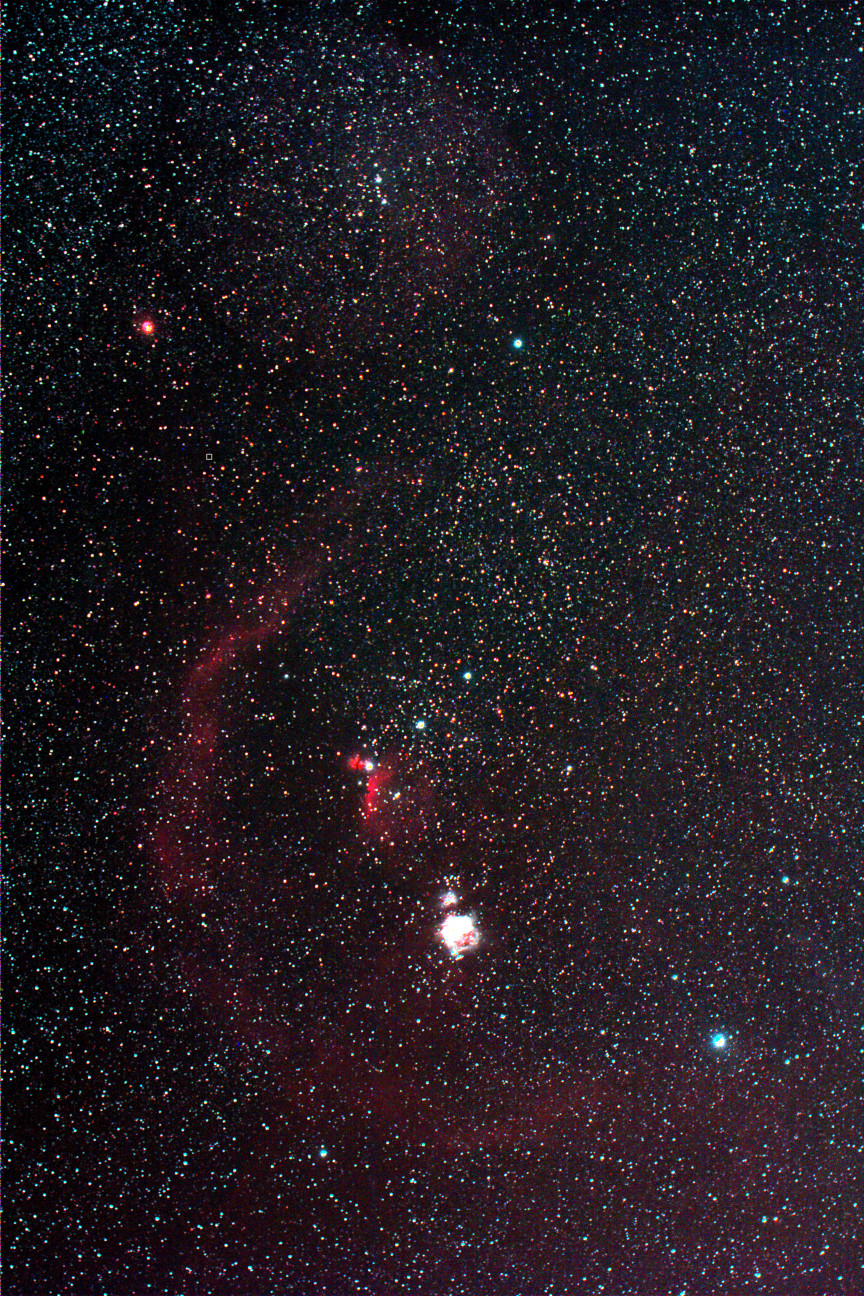This is a first approach to run long exposure imaging using a 50 mm f/1.4 optics with my Canon EOS 60D(a).
Barnard's Loop is a widely distributed hydrogen emission region in our galaxy found in the Orion star constellation. The distributed gas is existed by hot stars. However the emitted light intensities are very low. Image intensities are scaled to visualize the very faint hydrogen gas emission in this region. The Orion star constellation can be easily identified from the image. The famous Orion nebula appears overexposed. The famous horsehead nebula appears relatively bright at Orion's left belt star.
| Optics: | Sigma 50mm f/1.4 used at f/2.8 |
| Camera: | Canon EOS 60D, clear glass modification (internal filter removed), 400 ASA |
| Filter: | Optolong L-eNhance clip filter for Canon EOS |
| Exposure: | 126 x 30 sec, total 01:03 hours |
| Calibration: | Dark (200 images), skyflat (50 images) |
| Image Processing: | Shift & add with correction of subpixel movement |
| Date of exposure: | 01 Feb 2025 |
| Software: | ArgusPro SE, version 1.0.5474 |
| Remark: | Image post processing using an additional flat to compensate for scattering light |

